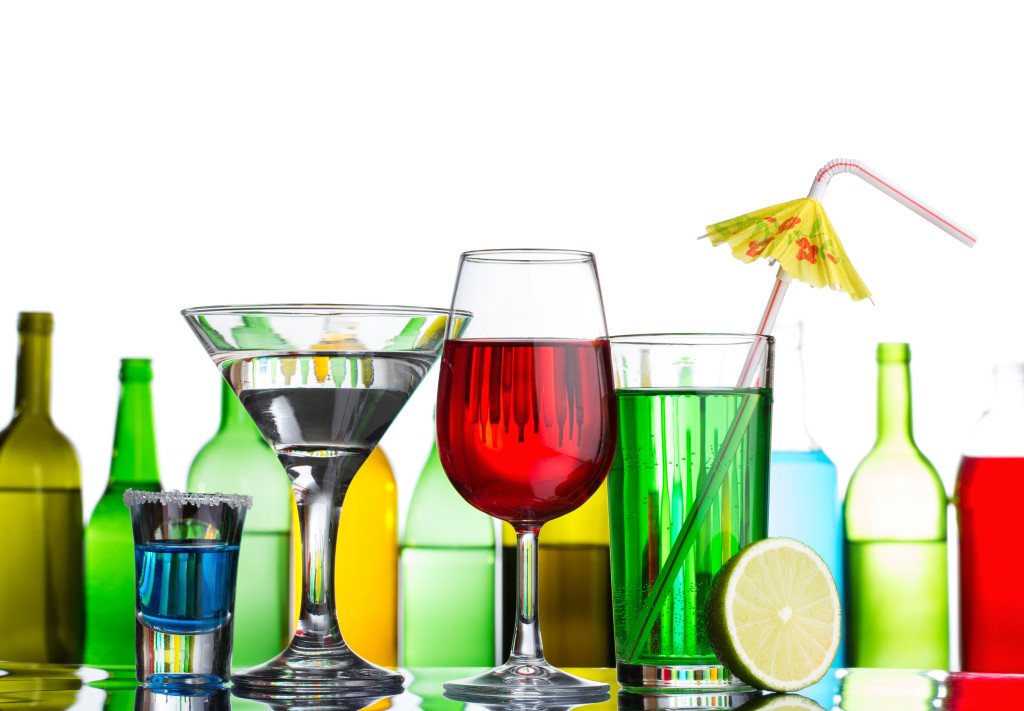You’re probably familiar with alcohol, which is scientifically known as ethanol. But how much do you know about one of the oldest recreational drugs besides the fact that it can make a great party? If you’re interested in knowing the mechanisms behind alcohol as well as some helpful tips to prevent a nasty hangover, keep reading!
Drinking alcohol, or ethanol is one of the most widely used drugs. It is a source of energy, with 1 gram of alcohol providing 7 calories; as a reminder, carbohydrates and protein provide 4 calories per gram and fat 7, so it is intermediate between the two. Although 7 calories per gram isn’t as much as calories from fat, it’s very easy to lose track of how much you’re drinking, and is also the cause of the phrase “beer-belly.”
Alcohol is also nutrient light—in other words your body derives no additional value from it besides energy. Alcohol is quickly absorbed in the stomach and small intestine, though the main site of metabolism is in the liver.
As you know, drinking alcohol causes intoxication to varying degrees depending on the person and the amount of drinks that person imbibed. What exactly is one drink of alcohol?
- One mixed drink: 44ml or 1.5 fl oz of 80-proof liquor (vodka, gin, rum etc.)
- 148 ml or 5fl oz of wine
- 355 ml or 12 fl oz of beer or wine cooler

Alcohol mainly acts as a depressant, which may seem a little strange as it’s known to free inhibitions and cause people to act in a loud/rambunctious way. However, this is mainly because it depresses the pre-frontal cortex, which is the seat of “higher thinking” in the brain. This is also why drinking alcohol and caffeine isn’t the best, as alcohol being a depressant doesn’t exactly “mix” well with caffeine which is a stimulant.
Alcohol also affects the motor cortex of the brain, which explains why so many people end up with scratches or bruises the next day after drinking a substantial amount. In other words, the more alcohol you drink the more areas of your brain get depressed and “sluggish,” which can eventually end in coma and death when the basal ganglia becomes impaired (area which function includes voluntary movement).
I mentioned before that alcohol is metabolized in the liver—the rate of metabolism actually varies per person: 12-15mg/dl per hour for a social drinker, and about 30mg/dl per hour for an alcoholic. An important thing to remember is that the liver can only metabolize a certain amount of alcohol per hour, regardless of the amount consumed! This means that the alcohol can “catch up to you”, and also why it’s possible to become sick half an hour after you stop drinking.
So, what can you do to prevent all the negative effects of alcohol yet still have a relatively good time? Drink Water!
Since alcohol metabolism requires water, your body needs to pull more water from its reserves to get rid of all the alcohol in your system. Plus, alcohol by itself is a natural diuretic and encourages the brain to urinate more water than it should. Put this all together and you can easily become dehydrated, which is the source of a hangover!
Therefore, if you remember to drink water in-between drinks(thus re-hydrating yourself) you’ll either suffer a less severe hangover or one not at all. Try it!


very help full,because people can realize ,a way to reduce or even avoid too many side effects from drinking.
Laurenh alcohol & drug classes at CU Boulder & you’ve done a really nice job explaining this process. Its exactly what we go over. Its nice to see you’ve done your research!